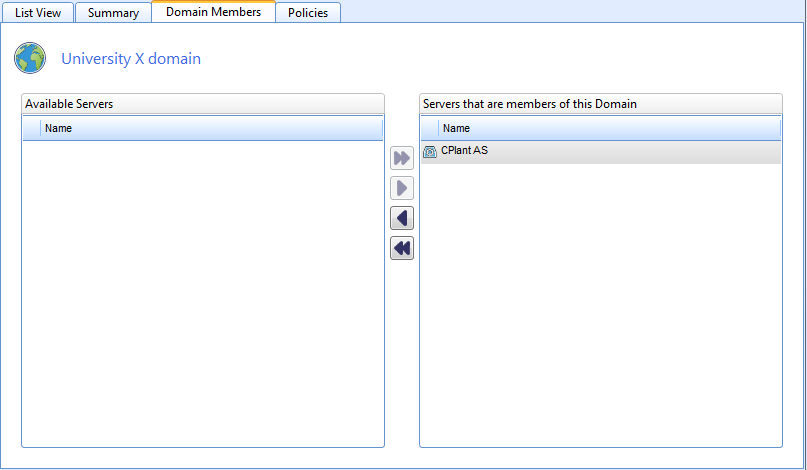Log on to rate and give feedback
1
2
3
4
5
Log on to rate
0

Explicación de procesos
Productos
Enterprise Server, Project Configuration Tool
Funcionalidades:
Gestión de usuarios
Versión del producto:
1.8, 1.9
13/10/2016
Removing a SmartStruxure Server Device from a Domain
You remove a SmartStruxure server device from a domain, for example, limit the Building Operation system to only hold SmartStruxure servers in use.
To remove a SmartStruxure server device from a domain
In WorkStation, on the Tools menu, click Control Panel .
On the Control Panel toolbar, select the SmartStruxure Server.
action_zoom_plus_stroke 
Click Domain .
In the Domains list, select a domain.
action_zoom_plus_stroke 
Click Domain members .
In the Selected Servers list, select the SmartStruxure server device, and click the Remove button
.action_zoom_plus_stroke 
action_zoom_plus_stroke 
Click the Save button
.action_zoom_plus_stroke 
 Domains
Domains
 Domain – Domain Members Tab
Domain – Domain Members Tab
 Assigning a SmartStruxure Server Device to a Domain
Assigning a SmartStruxure Server Device to a Domain
 SmartStruxure Server Overview
SmartStruxure Server Overview
